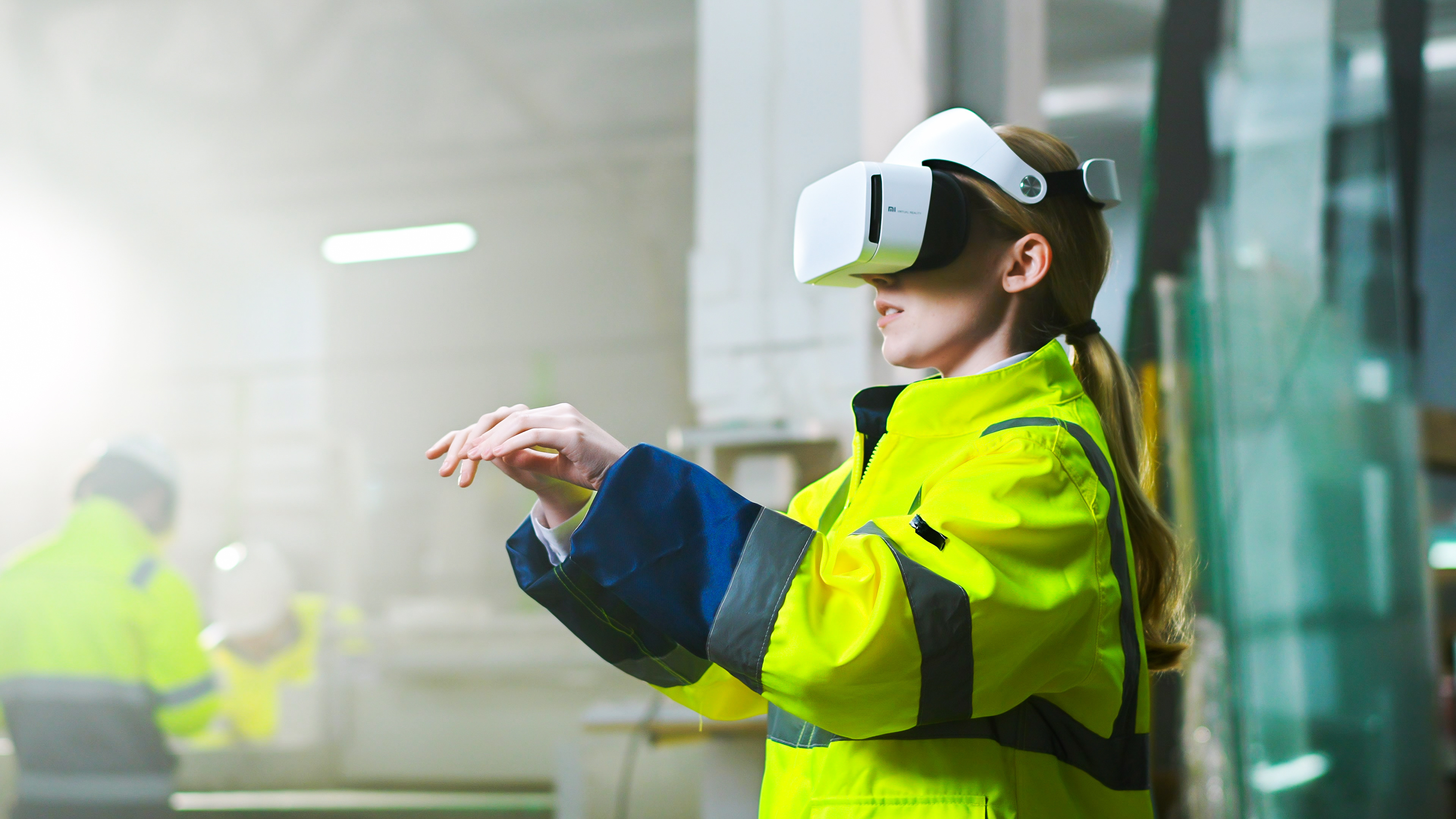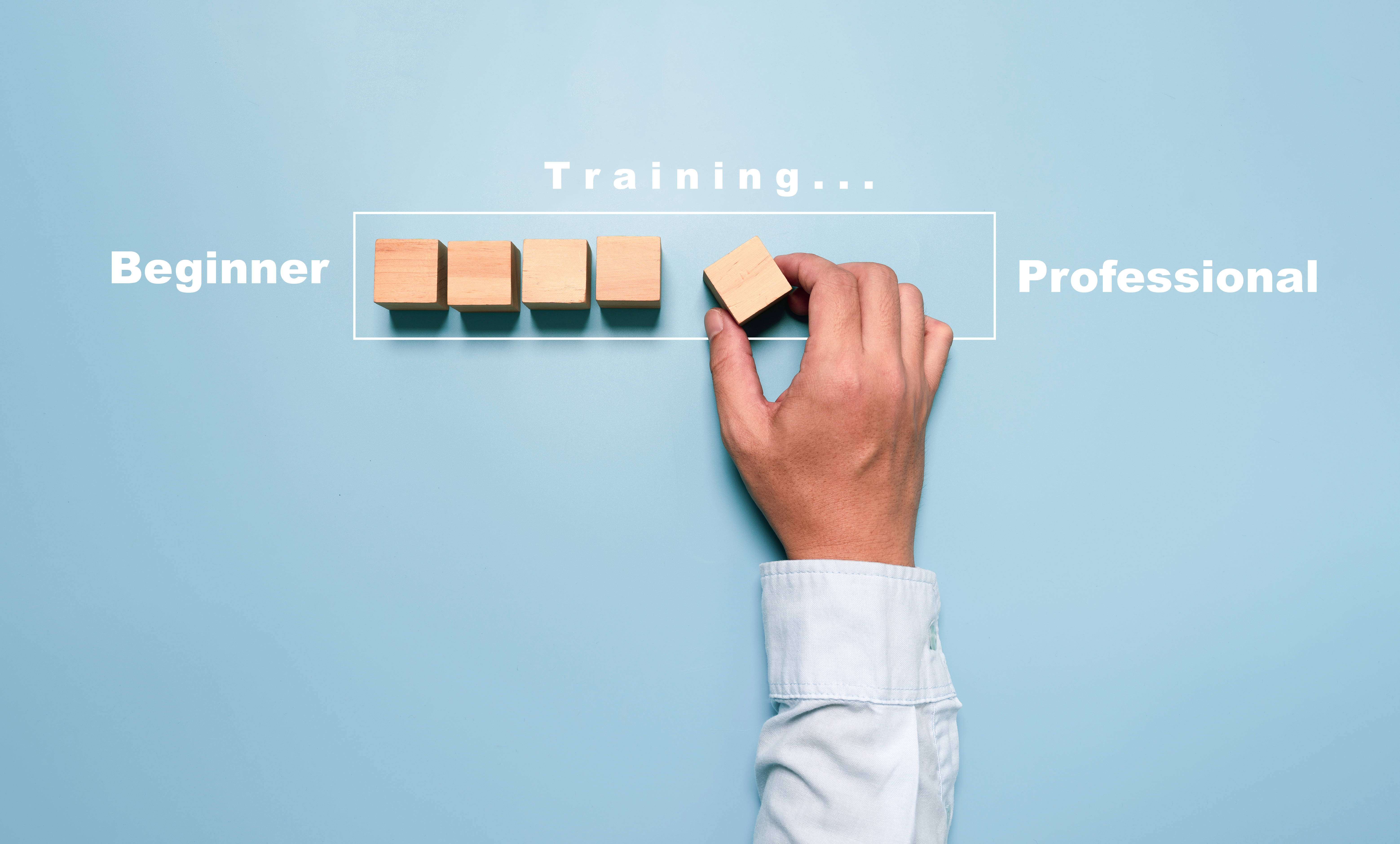It enables learning through action, practicing without risk, and repeating tasks until they’re fully mastered.
But one question remains: if real-world work relies on collaboration, why train alone in virtual environments?
The challenge of collaborative immersive training
Far from being just a technological gadget, collaborative VR marks a major evolution in the way immersive learning is designed. In many fields—logistics, maintenance, healthcare, or industry—performance depends not only on individual skills but also on the ability to work as a team.
In this article, we’ll explore the tangible benefits of multiplayer VR training through three key lenses: operational performance, soft skills development, and learner engagement.
We’ll also illustrate these advantages with a concrete use case: MIMBUS Logistics, an immersive solution built specifically for collaborative work.
Why go beyond individual training ?
For a long time, virtual reality training was designed for individual use: one learner, one headset, one mission. This approach has clear advantages—it fosters deep focus, allows unlimited repetition of tasks without distractions, and enables precise assessment of technical skills.
But it reaches its limits in professions where teamwork and role interdependence are essential. Take logistics, for example: a warehouse picker never works alone. They rely on instructions from a team leader, need to coordinate with colleagues, and must meet tight loading schedules. None of these realities can be addressed in a solo training module.
Without a multiplayer component, it’s impossible to:
-
Simulate crisis scenarios that require shared decision-making,
-
Train for managing workflow between multiple operators,
-
Develop effective communication under time pressure.
In short, individual VR training shapes skilled technicians. Multiplayer VR, on the other hand, paves the way for training professionals who can operate together in complex, real-world environments.

Three key benefits of multiplayer VR training
1. More realistic operational perfomance
In professional environments, performance depends not only on individual task execution but also on the team’s ability to coordinate effectively. Multiplayer mode enables the simulation of scenarios where each participant plays a specific role within a production chain or collective management framework.
This allows to:
-
Train complex real-time interactions (decision-making, synchronization)
-
Test responsiveness to unforeseen events (breakdowns, human errors, overloads)
-
Improve communication flow between operators
Learners move beyond a simple “success or failure” mindset to engage in a collective experience where outcomes rely on the group’s synergy—just like in real life.
2. Developing soft skills
Multiplayer virtual reality goes beyond simulating gestures or procedures. It becomes a training ground for relational and behavioral skills, which are now central to operational roles.
For example, it enables:
-
Developing initiative-taking within a group
-
Strengthening clear communication skills under time pressure
-
Simulating situations of disagreement or stress to practice listening and conflict management
These soft skills are difficult to assess in traditional training. In multiplayer VR, they can be staged, experienced, replayed, and analyzed—making them tangible and lasting.
.jpeg?width=1200&length=1200&name=AdobeStock_323444294%20(1).jpeg)
3. Significantly increased learners engagement
Finally, the multiplayer aspect transforms the learning experience into a collective moment, naturally boosting engagement. Interaction with others—whether avatars or peers—stimulates motivation, focus, and a sense of progress.
Learners:
-
Become more invested because their actions have a visible impact on others
-
Benefit from immediate social feedback
-
Are more likely to replay scenarios, driven by challenge and continuous improvement
The result: a more active, memorable learning experience that closely mirrors real-world conditions.
Use case : MIMBUS Logistics - collaboration at the heart of training
Let’s take the example of MIMBUS Logistics, an immersive simulator designed to train professionals in the logistics supply chain.
This module places learners in a virtual work environment where success depends on coordination across multiple roles.
In a typical session, the key roles involved throughout the logistics chain include:
-
Receiving and preparing orders
-
Shipping orders
-
Managing disputes
This type of scenario enables:
-
Faithful reproduction of warehouse operations without any material risk
-
Training in cross-station communication and responsibility sharing
-
Evaluation of both group performance and individual contributions
But above all, it transforms training into a dynamic exercise where learning happens by acting together.
This is where multiplayer VR truly shines: more than just an immersion tool, it’s a tool for collaboration and shared skills development.

What multiplayer mode changes in training design
Integrating a multiplayer mode in a training simulator goes far beyond simply adding more avatars in a virtual setting.
It means rethinking learning as a group dynamic, where competence is measured not only by what an individual can do, but by what they can achieve together with others.
This shift involves several key changes:
1. Designing collective scenarios, not just technical tasks
Training paths must include shared objectives and interdependent missions. The goal is no longer to “complete your exercise,” but to succeed together within a structured framework. This requires scripting situations of cooperation, tension, and even collective failure.
2. Evaluating performance differently
Multiplayer training demands moving beyond individual metrics. It becomes relevant to track:
-
The quality of communication between learners
-
Collective time management
-
Initiative-taking within a collaborative setting
-
Joint problem-solving in unexpected situations
These indicators enable a more nuanced, human-centered evaluation that better reflects real-world conditions.
3. Evolving the trainer’s roleThe trainer is no longer just an observer or corrector: they become a facilitator of interactions, leader of collective debriefings, or even a “player” within the scenario. Their mission is to support the group’s skill development, not only that of individual learners.
Train together to perform together
Integrating multiplayer mode in virtual reality should not be seen as a mere technical upgrade.
It represents a profound transformation in training methods, aligned with the demands of today’s complex, collaborative, and fast-paced professional environments.
By enabling learners to train together in realistic conditions, we:
-
Develop collective performance rather than just individual mastery
-
Cultivate key soft skills like communication, adaptability, and leadership
-
Strengthen engagement through dynamic, challenging, and concrete scenarios
Solutions like MIMBUS Logistics demonstrate that it is now possible to train entire operational teams by simulating high-stakes situations without using physical resources or exposing anyone to risk.
For companies, training centers, and institutions, multiplayer VR is thus a true strategic lever:
✔ To gain efficiency
✔ To better prepare for real-world challenges
✔ And to sustainably strengthen human skills
.




